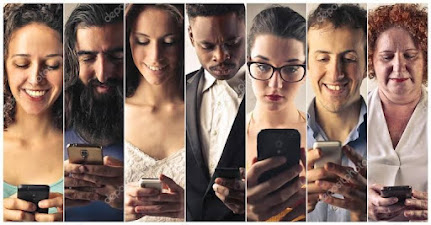Online Beauty Gurus are Replacing In-Store Advisors
TABS Group Explores the Relationships between Millennial Shoppers, Social Media, and Cosmetics in its 2014 Cosmetics Consumer Study
SHELTON, Conn., Dec. 18, 2014 /PRNewswire/ -- In the latest installment of its webinar series, TABS Group has released the results of its 2014 Beauty Consumer Insights Study.
The study surveyed 1000 women and 250 men between the ages of 18 and 74 on the types of beauty products they purchase, frequency of purchases, and the outlets they patronize. TABS Group also asked participants about ongoing trends in the beauty industry, including the use of BB and CC cream, the popularity of visiting a nail salon for manicures and pedicures, and the influence of social media on cosmetic purchase decisions.
Based on their data, TABS Group estimates that cosmetic sales in the US total over $12 billion annually (excludes skin care and hair care products), with most cosmetics shoppers buying more than seven types of products throughout the year. The majority of cosmetics buyers pay between $5 and $20 for products, but millennials are apparently willing to spend more, paying an average of 25 percent more for cosmetics than other age groups.
While major retailers like Walmart, Target, and Walgreens still dominate the share of dollars spent on cosmetics, TABS Group's data shows that cosmetics shoppers don't show loyalty to any specific outlet.
"The heaviest cosmetics shoppers demonstrate no brand loyalty, purchasing more than 8 brands, on average, and shopping at many more outlets than lighter buyers," says TABS Group founder and CEO Dr. Kurt Jetta. "Consistent with the data from our Consumer Value study earlier this year, most consumers say they prefer to shop for cosmetics at stores that offer good deals. The bottom line is that more deals lead to more sales, particularly among the heaviest buyers who have no loyalty to specific brands."
Key Findings:
Online Beauty Gurus are Replacing In-Store Advisors
Only 24 percent of heavy buyers indicated that they prefer to shop in stores with in-store beauty advisors. It's likely that buyers are increasingly turning to online beauty advice that they access through social media. 42 percent of heavy buyers say that social media is very important in making their purchasing decisions. Cosmetic blogs (29%) and YouTube (23%) were the most popular resources among these involved buyers.
'Tis the Season for Cosmetics Shopping
A number of cosmetics segments see a surge in sales around Christmas. Cosmetic kit sales increase nearly threefold during the holidays, and sales of both nail polish and lip makeup increase over 1.5 times more than average. And retailers can be comforted by the fact that 50 percent of these sales increases occur during the week of Christmas—further evidence that the gloomy Black Friday reports were off-base.
Don't Ignore the Men
While women are obviously the primary target demographic for cosmetics—with 86 percent purchasing cosmetics in the last year—retailers shouldn't ignore the importance of men. Men are also active cosmetics buyers: 30 percent of male participants stated that they had bought cosmetics in the last year. Not surprisingly, 58 percent of those men purchased cosmetics for their spouse.
Millennial Women, $75k to $99k Income Group, and Hispanics are the Most Involved
Millennial women between the ages of 25 and 34 purchase the most cosmetic products, an average of between 9 and 10 product types per year. Hispanic women also show higher involvement than other ethnic groups, purchasing over 8 product types per year.
Specialty Beauty, Online Retailers, and Department Stores Attract Heavy Buyers
While mass retailers were the most popular outlets for cosmetics buyers overall (57 percent of cosmetics buyers reported shopping at Walmart and 32 percent reported shopping at Target), specialty beauty stores, online retailers, and department stores are more successful at attracting heavy buyers (shoppers that regularly purchase more than 10 segments). Only 39 percent of Walmart's regular buyers are heavy buyers, while heavy buyers account for 69 percent of Sephora's regular buyers, 61 percent of online cosmetic retailers' regular buyers, and 58 percent of department stores' regular buyers.
Don't Count on Loyalty—Attract Heavy Buyers with Good Deals
While heavy buyers are valuable targets—purchasing 4 times more brands than light buyers and accounting for 58 percent of all cosmetics purchases—they don't show any true loyalty to specific outlets or brands. In fact, most heavy buyers purchase more than 4 brands regularly. The most effective way for retailers to get heavy buyers through their doors is to offer great deals. 57 percent of heavy buyers and 59 percent of medium buyers state that good deals are "very important."
The Economy is Rebounding, One Manicure at a Time
The survey's findings about an increase in women visiting nail salons could be a sign of increasing consumer confidence. 45 percent of women get their fingernails done at a salon, 42 percent get their toes done at a salon, and 31 percent said that they visit the nail salon more frequently this year than last year compared to 26 percent going less often. Furthermore, the more vs. less spread was even more pronounced with light cosmetics buyers, as twice as many go more vs. less (42% vs. 19%).
To learn more about TABS Group or to schedule a custom review of the data, visit their website or email webinar@tabsgroup.com.
SOURCE TABS Group, Inc.CONTACT: Rikki Rogers, 804.543.4774, rikki@verasolve.com
RELATED LINKS
http://www.tabsgroup.com
Q DIO LONG 5PCS - MilkyWay Que Human Hair MasterMix Weave Extensions #1 Jet Black
Tweet





Comments
Post a Comment